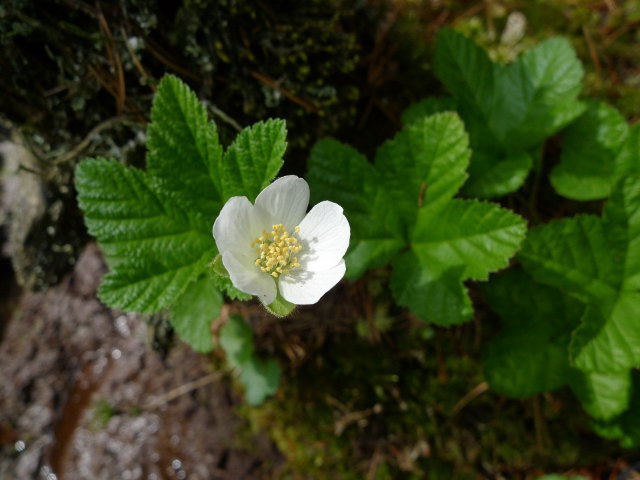Peat Bogs: A Bit of Tundra in Our Backyard
Published at 11:17 on 24 May 2018
 I’ve been out of town a fair bit recently, so this is a photo that was neither taken on Bainbridge Island nor even does it show a plant that grows here, for the plant depicted above is the Cloudberry, Rubus chamaemorus.
I’ve been out of town a fair bit recently, so this is a photo that was neither taken on Bainbridge Island nor even does it show a plant that grows here, for the plant depicted above is the Cloudberry, Rubus chamaemorus.
Seeing this flower for the first time was a highlight of my recent trip to BC. The one in the picture is one of the southernmost wild-growing Cloudberry plants in the world, as this plant’s range stops at the bogs of the Fraser River Delta, just north of the 49th parallel. It’s mostly a plant of the arctic tundra, but some populations do wander well south of the arctic in bogs.
Burns Bog has long been a forgotten and neglected part of the Vancouver metro area. There’s now efforts to preserve the parts of it that haven’t been drained and converted to other uses, but facilities for visitors are still very limited and not easy to find. Those interested in visiting a part of it that’s open to the public on their next trip to Vancouver can find the driving directions here.
Why do we see plants of the arctic tundra in peat bogs? It turns out that bogs mimic many of the soil conditions that form in the arctic. Like the arctic tundra, whose soil is prevented from draining by permafrost, bogs contain highly acidic waterlogged soil.
Why is Cloudberry found in these bogs, but not in ones just slightly further south, which have almost identical soil and environmental conditions? My best theory so far is that it has to do with migrating birds: before it was urbanized, the Fraser Delta was a huge complex of freshwater and tidal wetlands that served as a major wintering area for waterfowl, and at least one bird over the millennia arrived with a Cloudberry seed riding somewhere on it or inside its gut. Smaller peat bogs to the south failed to serve as major attractors of wintering waterfowl and thus never had this plant introduced to them.
The bog at IslandWood here on the island has no Cloudberry, but it does have a lot of Labrador Tea (Ledum groenlandicum), a plant whose common name references one northerly region and whose scientific one references another (Greenland), thus revealing its status as an arctic tundra plant.
